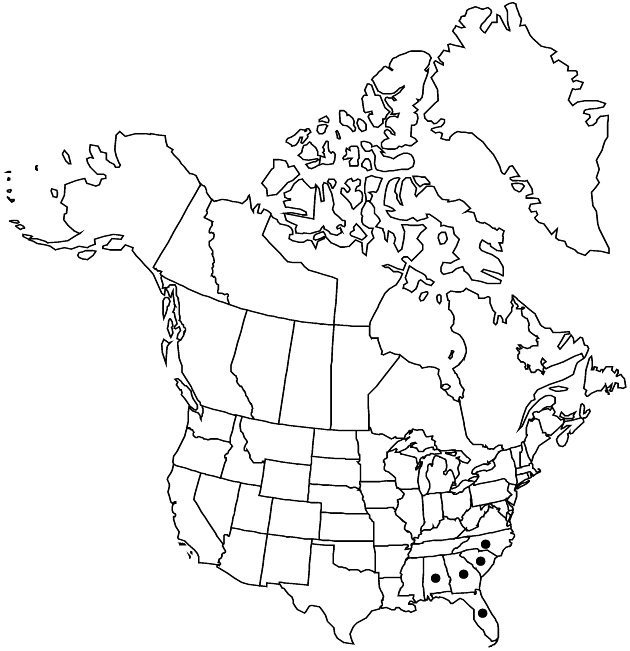Eupatorium anomalum
Bull. Torrey Bot. Club 23: 106. 1896.
Perennials, 80–150+ cm. Stems (from tuberous rhizomes) single, densely branched distally (shoots often develop from lateral buds), puberulent throughout (denser distally). Leaves usually opposite (distal sometimes alternate); sessile or subsessile; blades 3-nerved distal to bases, elliptic to oblong, 15–50 × (5–)10–20 mm, bases cuneate, margins entire or serrate (unevenly toothed), apices rounded to acute, faces puberulent (abaxial) or glabrate (adaxial), gland-dotted (both). Heads in corymbiform arrays. Phyllaries 8–12 in 2–3 series, oblong to lanceolate, 2.5–5 × 0.5–0.7 mm, apices rounded to acute, abaxial faces puberulent throughout. Florets 5; corollas 3–3.5 mm. Cypselae 1.8–3 mm; pappi of 20–35 bristles 3.5–4.5 mm. 2n = 20, 30, 40.
Phenology: Flowering Jul–Aug.
Habitat: Wet, low ground, flatwoods
Elevation: 10–100 m
Distribution

Ala., Fla., Ga., N.C., S.C.
Discussion
Of conservation concern.
Eupatorium anomalum has been proposed to be intermediate in morphology between E. rotundifolium and E. mohrii and, possibly, a hybrid derivative of that pairing. Molecular data suggest that its derivation is from hybridization between E. serotinum and E. mohrii.
Selected References
None.